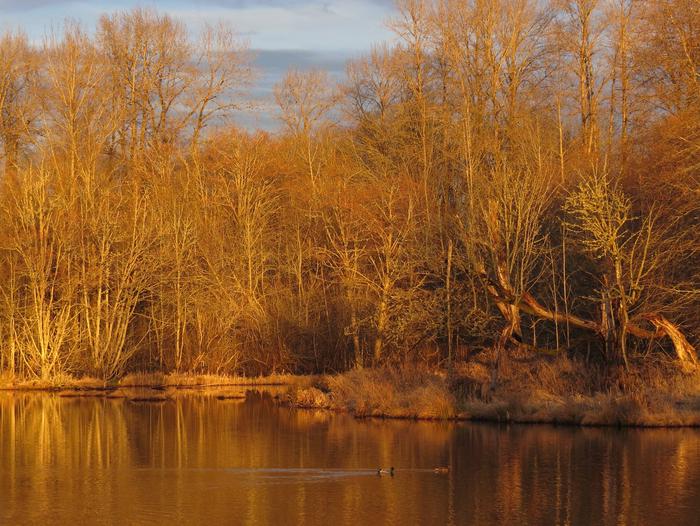Billy Frank Jr. Nisqually National Wildlife Refuge
In 1974, in recognition of the area's unique fish and wildlife resources, Billy Frank Jr. Nisqually National Wildlife Refuge was established with approval by the Migratory Bird Conservation Commission. The refuge protects the Nisqually River Delta, a vital place for migratory birds and salmon as well as resident wildlife. Congress approved a boundary within which land for the refuge may be acquired. The refuge currently has fee title to approximately 2,925 acres of the 7,415 acres within the approved boundary. Legal authorities used for the establishment of the refuge include the Migratory Bird Conservation Act and Fish and Wildlife Act of 1956. The refuge plays an increasingly important role in the protection of the Nisqually River Delta and the lower Nisqually River watershed. The refuge is a diverse mosaic of habitats, including salt marsh, marine waters, riparian forest, freshwater wetlands, grassland, and upland forest. It has international significance as a staging area, sanctuary, and migration stopover for migratory birds of the Pacific Flyway. The refuge also has regional importance as migration and rearing habitat for salmon, particularly the Nisqually River run of the federally-listed Nisqually Chinook salmon. But this refuge has not remained unchanged. One of the largest restoration efforts in Puget Sound returned diked farmland back to its original saltwater mudflat. The transformation of the landscape from a century of farmland back to a productive wetland is ongoing. This is a living laboratory, revealing how an ecosystem can heal. This slice of wildness is sandwiched between the state capital and a military base, its approved boundary bisected by Interstate 5. Yet it supports a wide range of wildlife and draws photographers, students, and other visitors to view the changing seasons, swinging tides, and shifting populations of plants and animals.
Billy Frank Jr. Nisqually National Wildlife Refuge is located 8 miles northeast of Olympia, Washington, at 100 Brown Farm Road, Olympia, WA 98516: Southbound on Interstate 5: take exit 114. Turn right at the traffic light, go under I-5, and make a right turn into the Refuge. Follow the entrance road to the two public parking lots. Northbound on Interstate 5: take exit 114. Turn left at the stop sign, go under I-5, and make a right turn into the Refuge. Follow the entrance road to the two public parking lots.

